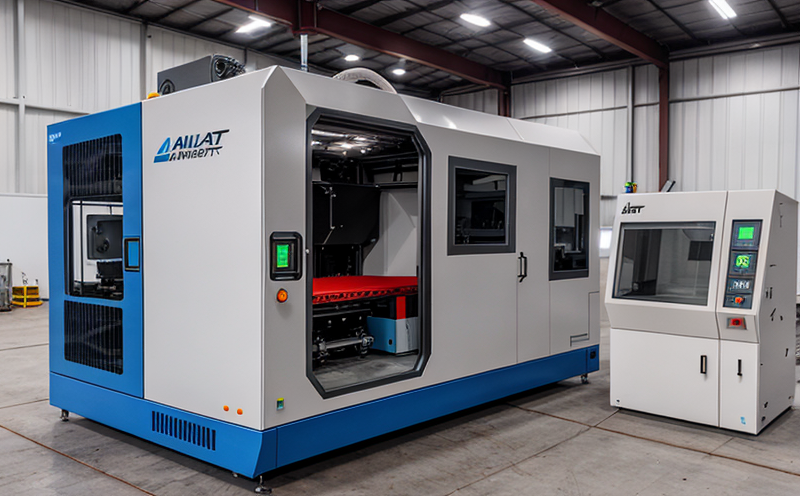ISO 17296-3 Material Property Testing in Additive Manufacturing
The ISO 17296 series provides a comprehensive framework for ensuring the quality and reliability of additive manufacturing (AM) processes. Specifically, ISO 17296-3:2020 focuses on material property testing in AM processes. This standard is crucial for industries that rely heavily on AM, such as aerospace, automotive, medical devices, and defense sectors.
The primary goal of ISO 17296-3 is to establish a consistent method for testing the properties of materials used in AM processes. These tests are essential for verifying that the materials meet the required specifications before they are used in production. The standard covers various aspects of material property testing, including mechanical, chemical, and physical properties.
One of the key challenges in AM is ensuring that parts produced using different methods (e.g., laser powder bed fusion, electron beam melting) have consistent material properties. ISO 17296-3 addresses this by providing detailed guidance on how to perform these tests accurately and repeatably. This ensures that manufacturers can trust the results of their testing and make informed decisions about which materials to use in their processes.
The standard also emphasizes the importance of specimen preparation. Proper specimen preparation is critical for obtaining accurate test results. The ISO 17296-3 guidelines provide specific instructions on how to prepare specimens, including considerations such as orientation, thickness, and surface finish. These factors can significantly impact the test results, so it is essential to follow these guidelines carefully.
Another important aspect of ISO 17296-3 is the choice of testing methods. The standard recommends a range of tests that can be used to evaluate material properties. For example, tensile strength, compressive strength, and impact resistance are all critical properties that need to be tested. However, the specific tests required will depend on the type of AM process being used and the intended application of the part.
The standard also covers the acceptance criteria for these tests. These criteria ensure that parts meet the necessary specifications before they are released for use in production. Acceptance criteria can vary depending on the industry and the specific requirements of the product. For example, aerospace parts may have more stringent requirements than automotive parts. However, ISO 17296-3 provides a framework for setting these criteria based on international standards.
Finally, ISO 17296-3 also addresses the reporting of test results. Clear and accurate reporting is essential for ensuring that manufacturers can make informed decisions about their processes. The standard recommends best practices for reporting test results, including guidelines for formatting reports and documenting any deviations from expected results.
In summary, ISO 17296-3 provides a comprehensive framework for material property testing in AM processes. By following this standard, manufacturers can ensure that the materials they use meet the necessary specifications and produce parts of consistent quality.
Benefits
- Enhanced Quality Control: ISO 17296-3 ensures that material properties are consistently tested, leading to higher-quality products.
- Increased Process Repeatability: By following the standard's guidelines for specimen preparation and testing methods, manufacturers can achieve more consistent results across multiple runs of a process.
- Informed Decision-Making: Accurate test results allow manufacturers to make informed decisions about which materials to use in their processes.
- Improved Compliance: The standard helps ensure that manufacturing processes are compliant with international standards, reducing the risk of non-compliance issues.
- Increased Reliability: By testing materials thoroughly and consistently, ISO 17296-3 helps improve the reliability of products produced using AM processes.
Environmental and Sustainability Contributions
The use of ISO 17296-3 in additive manufacturing can have significant environmental and sustainability benefits. By ensuring that materials used in AM processes meet strict quality standards, manufacturers can reduce the risk of using substandard materials. This reduces waste and improves efficiency, which are key factors in sustainable manufacturing.
In addition to reducing waste, ISO 17296-3 also helps manufacturers identify materials that have a lower environmental impact. For example, some AM processes use metals or alloys that are more easily recycled than traditional manufacturing methods. By using these materials, manufacturers can reduce their carbon footprint and contribute positively to sustainability efforts.
The standard also promotes the use of innovative materials that offer improved performance while reducing environmental impacts. For instance, biodegradable polymers or other sustainable materials may be used in AM processes where they are appropriate. This helps manufacturers meet increasing demands for environmentally friendly products without sacrificing quality.
Finally, ISO 17296-3 supports the development of circular economy principles by encouraging manufacturers to reuse and recycle materials as much as possible. By following this standard's guidelines, manufacturers can ensure that waste is minimized and resources are used efficiently throughout the product lifecycle.
Competitive Advantage and Market Impact
The adoption of ISO 17296-3 in additive manufacturing provides significant competitive advantages for companies. By ensuring consistent material properties, manufacturers can produce high-quality products that meet or exceed industry standards. This enhances customer confidence and satisfaction, leading to increased market share.
ISO 17296-3 also helps companies stay ahead of regulatory trends by ensuring compliance with international standards. As regulations evolve, those who are already familiar with the standard will have an easier time adapting to new requirements. This reduces the risk of non-compliance and associated penalties.
In addition, ISO 17296-3 supports innovation in AM processes by providing a robust framework for testing materials. This allows manufacturers to experiment with new materials and technologies while ensuring that their products meet strict quality standards. This encourages continuous improvement and helps companies maintain a leadership position in the market.
Finally, ISO 17296-3 contributes to the development of a skilled workforce by promoting best practices for material property testing. As more manufacturers adopt this standard, they will need personnel trained in its principles. This creates new opportunities for skilled workers and enhances overall industry knowledge.





